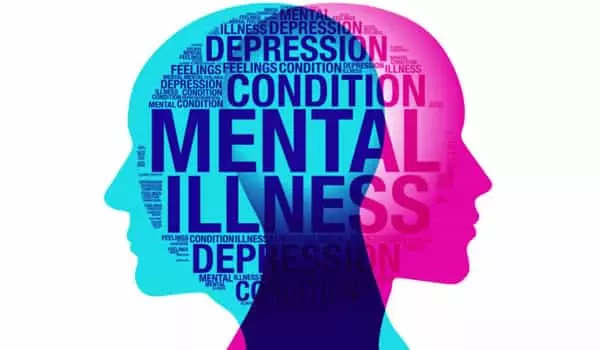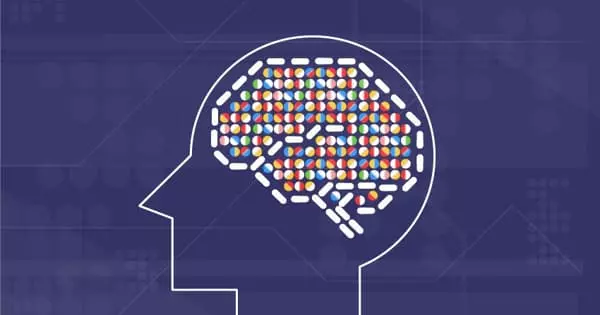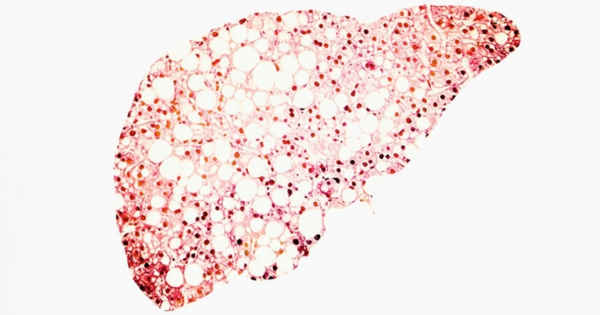One-third of children with a chromosome 22 microdeletion will develop a psychotic illness such as schizophrenia later in life. But how do we know which of these children are at risk? Various studies have now contributed to a better understanding of the neurobiological mechanisms involved in the development of psychotic illnesses. The issue is that the ability to identify those at risk and tailor treatment to their needs is still limited.
Indeed, many factors other than neurobiology play a role in their development. This is why a team from the University of Geneva (UNIGE) has collaborated with a team from EPFL to use an artificial intelligence tool: the network analysis method, in a longitudinal manner.
Over a twenty-year period, this algorithm correlates many variables from various backgrounds – neurobiological, psychological, cognitive, and so on – to determine which current symptoms are predictive of a psychotic illness in the child’s future developmental trajectory.
These findings, which will be published in the journal eLife, will allow for the early treatment of children who are thought to be at risk of developing psychological disorders, with the goal of preventing or even avoiding them. One in every 4,000 people has a chromosome 22 microdeletion, which can lead to the development of psychotic illnesses such as schizophrenia in adolescence. However, only one-third of them will be affected by a psychotic disorder at some point in their lives. How do we know which ones?
A new AI algorithm can successfully predict which children with microdeletion of chromosome 22 will develop schizophrenia and other mental health disorders later in life.
“For the time being, the analyses are looking at the neurobiological mechanisms involved in psychological disorders, as well as the presence of certain symptoms that are assimilated to a psychological illness, without knowing which are the most relevant,” explains Corrado Sandini, a researcher at the UNIGE Faculty of Medicine’s Department of Psychiatry and the study’s first author, to the Fondation Pôle Autisme.
In predicting the course of the disease and providing the most appropriate treatment for the patient, not being able to take into account the degree of importance of each symptom can be problematic.
“This is why we considered using the network analysis method,” he adds. This methodology, which is currently being used on adults, allows for the simultaneous consideration of variables from completely different worlds in the same analysis space.
“Because the development of psychotic illnesses is dependent on many variables other than purely neurobiological ones, this algorithm would allow us to highlight the most important symptoms to alert about the potential risks of a child becoming schizophrenic, for example,” says Stéphan Eliez, professor at the UNIGE Faculty of Medicine and the Fondation Pôle Autisme.

Finding the predictive symptoms
The Geneva team collaborated with EPFL researchers to develop this methodology, which was then applied to a cohort of children and adolescents with chromosome 22 microdeletions, some of whom had been followed for more than two decades.
“The goal is to adapt network analysis by tailoring it to young patients longitudinally, in order to obtain insightful statistics on highly intertwined variables throughout the child’s developmental trajectory,” says Dimitri Van De Ville, a professor at the UNIGE Faculty of Medicine and the EPFL Institute of Bioengineering. The aim is to find the variables in childhood that will foresay the development of psychotic illnesses.
“We will thus know which battle to fight, thanks to key factors that will enable us to act where and, most importantly, when it is necessary,” Stéphan Eliez explains. “If we can identify them, we can try to regulate the symptom in order to lower the risk of developing a psychotic illness later on.”
To put the methodology to the test, 70 children with a chromosome 22 microdeletion were followed up on every three years from childhood to adulthood.
“These variables included hallucinations, general mood, feelings of guilt, and daily stress management,” explains Corrado Sandini. Questionnaires completed by parents also provided useful information.
The most important variables that predict the development of psychological problems three years later were then shed light on/highlighted/determined using visual representations. “We discovered that an anxious 10-year-old who develops an inability to cope with stress in adolescence is more likely to develop a psychological illness. Anxiety evolution is thus a significant warning signal,” says the Geneva researcher. Similarly, sadness, which develops into a sense of guilt over time, is an important symptom.
A personalized method for each child
To validate the algorithm’s results, the researchers applied it to other cohorts vulnerable to psychotic illnesses that had been followed for many years and were thus able to confirm that the computer tool works. The goal is now to use it as a predictive tool while also refining it by incorporating other variables, such as weight, to contribute to clinical assessment.
Finally, the appeal of this method is obvious in its prediction, with the goal of avoiding disease, but more importantly in its fully personalized nature, which studies the developmental trajectory unique to each child.
















